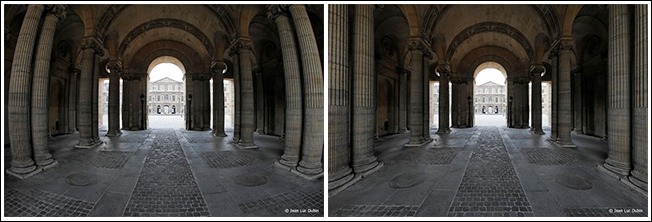DxO for $99 up Until 31st December
For any of the photographers that visit my site, just in case you missed it, Image Science are making their specialised RAW image developer tool DxO Optics Pro v7.1 available for $99 through to the last day of December. This is a saving of $70 (the normal cost is $169).
DxO is generally recognised as one of the premier tools for developing RAWs.
Unlike most other RAW development tools, including Adobe Camera Raw (as used by PhotoShop, Lightroom, and PhotoShop Elements), DxO knows things about most (probably all) of the lenses and sensors used by pro-am and professional cameras (including 3rd partly lenses from Tamron, Sigma, and others).
For lenses it knows about any colour casts they add, issues they have with chromatic aberration (CA) or purple fringing (as it is sometimes called), vignetting problems (darkened corners), barrel distortion issues (which every zoom lens under about $1,500 has to some degree), and image sharpness.
DxO knows about these lens issues at various zoom lengths (in the case of zoom lenses) and various f-stops. All this information is stored online in a database that is constantly being updated by the lens testing labs at Image Science.
The first time you use DxO to develop a RAW it automatically gets the lens data and correction information from the Image Science database (assuming you are connected to the Internet). It shows you the image before and after the lens correction heuristics are applied to the RAW. You can then elect to use them or not use them. Based on my little play around with the trial copy I seriously doubt that anyone ever elects to not use them unless you are going after a particular special effect and the DxO corrections ruin that effect (e.g., in some cases you might not want low-light digital noise removed if you are going after a grainy high‑speed film look).
Taken from the DxO site the following is an example of the automatic barrel distortion correction for an unnamed lens. The example at left shows the fish-eye barrel distortion as taken by the camera and the example at right shows the image after DxO’s automatic correction for that lens has been applied.
DxO are also kind of famous for their noise removal processing which again is tuned in based on the sensor in the camera used to capture the RAWs. Different sensors have different low-light noise characteristics.
The following example, again taken from the DxO site, shows DxO noise reduction at work. The image at left is from the camera and you can see the red-speckle noise in the black background and there is also a lot of noise on the artefact. The right image has been de-noised by DxO and now the black background has had much of the red-speckle digital noise removed and the removal of digital noise from the artefact has got it looking much brighter and sharper.
[Both examples above link to the features page at DxO. Examples have been cropped and resized to fit my posting width. No other editing was performed on the images.The first example was shot by Jean Luc Dublin and the second example by Laetitia d’Aboville]
DxO does have it downsides. From my play around with it I found the interface took a little getting used to. I understand that the v7 interface is supposed to be a big improvement on the previous interface, but even so you do need to work at it a little. Also I am using a 24” 1920x1200 16:10 screen and DxO, like a lot of photo editing tools, seems to expect either a 16:9 TV aspect ratio or a 16:10 computer wide-screen aspect ratio. I am not sure how well DxO would be suited if used on a 1280x1024 4:3 ‘square’ screen.
The other sort of downside is that DxO seems slow when processing images. I work on an Intel i7 based computer with 4GB of RAM using 32-bit Windows 7 Professional. On this computer it takes about 20 seconds to process a Pentax K-5 PEF RAW once you get all your settings how you want them. But maybe this is the price you pay when you factor in the additional work DxO is doing compared to a ‘normal’ RAW converter.
Just a closing point—although it can make many other adjustments to your images including shadow and highlight detail recovery, by and large DxO Optics Pro is a RAW image developer. Once you have developed your RAW image you are most likely then going to want to go and do further cropping, additional ‘spot’ shadow recovery, contrast adjustments, saturation adjustments, resampling, sharpening, and other general editing using your favourite raster image editor, which for me is Adobe Photoshop Elements (a.k.a. PSE).



